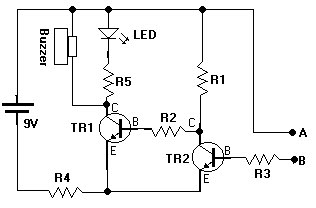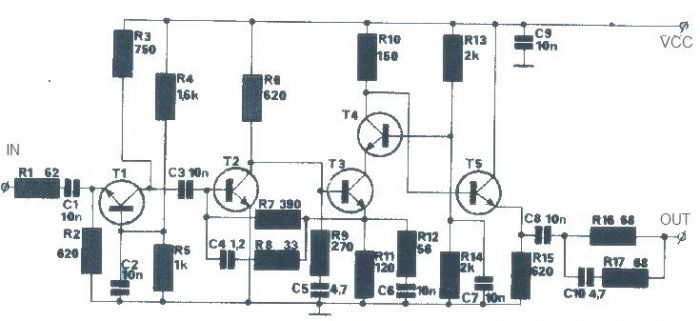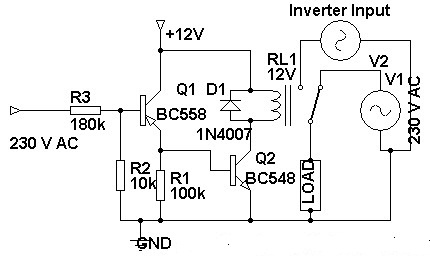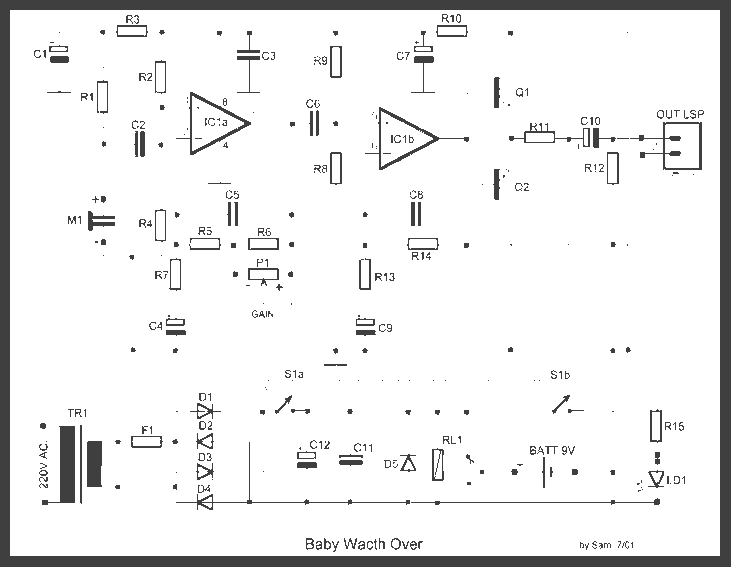
water detector circuit for your

This document presents a water sensor circuit designed to monitor soil moisture levels for plants. This circuit is straightforward and is constructed using five resistors, two transistors, an LED, a buzzer, and a battery. The operation of the circuit is simple: it emits a beep when the soil is dry and stops beeping when moisture is detected.
The water sensor circuit functions as a basic moisture detection system. It utilizes two transistors configured as a switch, which controls the buzzer and LED indicators. The circuit operates on a low voltage battery, ensuring it is energy-efficient and suitable for continuous use in a garden or indoor plant setting.
When the soil moisture level drops below a certain threshold, the resistance in the soil changes, triggering the transistors. This change activates the buzzer, producing an audible alert to indicate that the soil is dry. The LED serves as a visual indicator, providing a clear signal that attention is needed for the plant's watering.
The resistors are used to set the biasing conditions for the transistors and to limit the current flowing through the buzzer and LED, ensuring that they operate within safe limits. The choice of components allows for a compact and reliable design that can be easily assembled on a breadboard or a printed circuit board (PCB).
In summary, this water sensor circuit is an effective tool for plant care, combining simplicity in design with functionality to ensure plants receive adequate moisture. It is an excellent project for beginners in electronics, demonstrating fundamental principles of circuit design and component interaction.Today i want to share with you all my water sensor. This is my second successful project when i started with electronic hobby. This circuit is useful for your plant. How it`s work simple. It will beeping when your plant soil is dry and stop when it detect water. that all. It hard Don`t worry, it`s simple circuit construction. You just need 5 re sistors, 2 transistors, a LED, Buzzer and battery of course. Ok let`s construct the circuit. 🔗 External reference
The water sensor circuit functions as a basic moisture detection system. It utilizes two transistors configured as a switch, which controls the buzzer and LED indicators. The circuit operates on a low voltage battery, ensuring it is energy-efficient and suitable for continuous use in a garden or indoor plant setting.
When the soil moisture level drops below a certain threshold, the resistance in the soil changes, triggering the transistors. This change activates the buzzer, producing an audible alert to indicate that the soil is dry. The LED serves as a visual indicator, providing a clear signal that attention is needed for the plant's watering.
The resistors are used to set the biasing conditions for the transistors and to limit the current flowing through the buzzer and LED, ensuring that they operate within safe limits. The choice of components allows for a compact and reliable design that can be easily assembled on a breadboard or a printed circuit board (PCB).
In summary, this water sensor circuit is an effective tool for plant care, combining simplicity in design with functionality to ensure plants receive adequate moisture. It is an excellent project for beginners in electronics, demonstrating fundamental principles of circuit design and component interaction.Today i want to share with you all my water sensor. This is my second successful project when i started with electronic hobby. This circuit is useful for your plant. How it`s work simple. It will beeping when your plant soil is dry and stop when it detect water. that all. It hard Don`t worry, it`s simple circuit construction. You just need 5 re sistors, 2 transistors, a LED, Buzzer and battery of course. Ok let`s construct the circuit. 🔗 External reference





